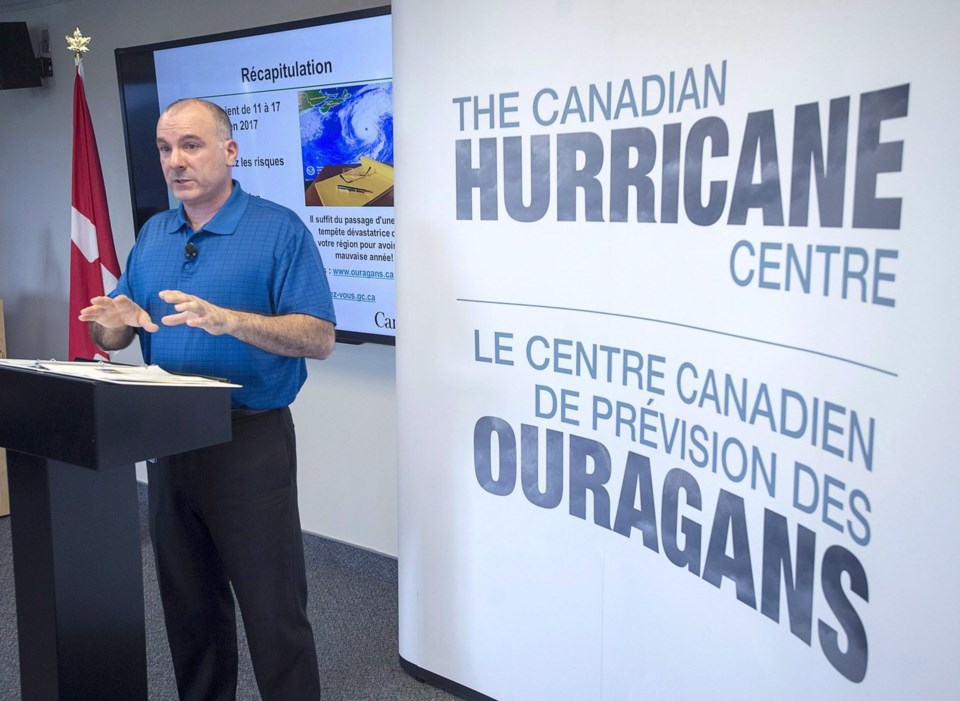HALIFAX — As the Atlantic hurricane season is about to start, a senior Environment Canada meteorologist says experts are predicting another active year for tropical storms.
But Bob Robichaud at the Canadian Hurricane Centre in Halifax said Friday the actual impact on Canada is impossible to forecast. That's because there's no telling where these storms will go once they form over the ocean.
"Although we can predict the level of activity, we can't necessarily predict ... if any will make landfall and what the impacts might be," he told an online briefing. "Sometimes, you can have a very active season, but the storm track keeps most of the storms offshore."
As an example, he said last year's very active season produced 18 named storms — 11 of them hurricanes — but only one storm, Ernesto, made it into the so-called Canadian response zone and it didn't cause much of a fuss by staying offshore.
Still, the remnants of what was post-tropical storm Debby caused flooding in eastern Ontario and Quebec in August.
Meanwhile, 2022 was also a slow season in the Canadian zone, but the arrival of post-tropical storm Fiona in September proved to be Atlantic Canada's costliest weather event, causing more than $800 million in insured damage and killed three people.
The hurricane centre has calculated that, based on a 30-year average, between 35 and 40 per cent of all tropical storms typically enter the Canadian zone, which extends from Ontario eastward to Atlantic Canada's sprawling offshore.
As a result, between two and four named storms enter the Canadian zone every year, which means preparation for dangerous weather is a must, Robichaud said.
"That's about as far as we can go in saying anything meaningful as to what the impacts or how many storms might affect Atlantic Canada," he said. "Where these storms go is another thing entirely. That depends on the weather of the day."
Hurricane season starts on June 1, typically peaks in September and ends on Nov. 30.
On Thursday, American forecasters at the National Oceanic and Atmospheric Administration said warmer-than-normal ocean temperatures were expected to fuel an unusually busy hurricane season. But they said it wouldn't be as bad as last year when killer storms Beryl, Helene and Milton made landfall in the southern U.S.
The U.S. forecast calls for 13 to 19 named storms with six to 10 becoming hurricanes and three to five reaching major status with winds of more than 177 kilometres per hour. A normal season has 14 named storms, seven of which strengthen to hurricanes and three reach the major level.
Since 1995, 21 of the 30 Atlantic hurricane seasons have been officially classified as above normal.
On Friday, Canadian research scientist Megan Kirchmeier-Young said the number of tropical storms does not seem to be increasing, but their intensity is. As well, she said a larger proportion of storms are strengthening to become major hurricanes.
"That is something we expect to continue," she told the Halifax briefing. "We're also seeing increased rain rates, so the storms we're getting have more rainfall, and sea level rise is exacerbating any storm surge and coastal flooding."
This report by The Canadian Press was first published May 23, 2025.
With files from the Associated Press
Michael MacDonald, The Canadian Press




